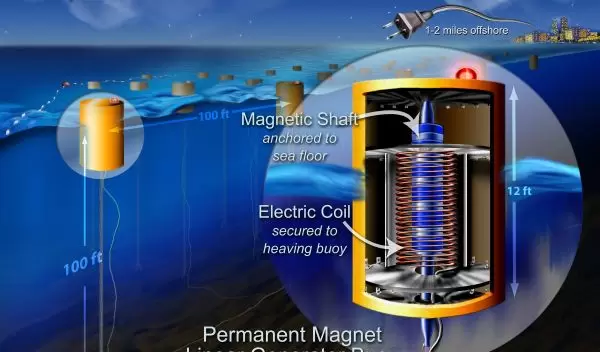
Waves of Power
Whether witnessed as destructive waves, gently rolling swells or mesmerizing rhythms along the shoreline, the sea's energy is immense. In fact, experts estimate that just 0.2 percent of it--in the form of waves, tides, salinity and more--could power the entire world. Although the technology is 15-20 years behind that of wind energy, ocean power is a promising, clean energy source that is more predictable, available and energy-dense than wind is.
Led by Annette von Jouanne and Alan Wallace, engineers at Oregon State University (OSU) have found a way to tap into the ocean's vast potential by developing ways to harness its energy and use it to produce electricity: buoy systems that can generate power just by floating in the ocean's undulating swells. One such system, located one to two miles offshore, is a permanent magnet linear generator buoy. An electric coil surrounds a magnetic shaft inside the buoy, and while coil is secured directly to the buoy (see illustration), the magnetic shaft is anchored to the seafloor. When waves cause the coil to move up and down relative to the fixed magnetic shaft, voltage is induced and electricity is generated. Each buoy could potentially produce 250 kilowatts of power, and the technology can be scaled up or down to suit a variety of energy needs. A fleet of about 200 such buoys could power the business district of downtown Portland.
OSU's proximity to the Pacific coast, combined with strategic research facilities in the OSU Motor Systems Resource Facility and the university's O.H. Hinsdale Wave Research Laboratory, make it a leader in this new technology. The researchers are planning a demonstration facility to test this developing technology in conjunction with the Electric Power Research Institute and others.
-- Nicolle Rager Fuller


